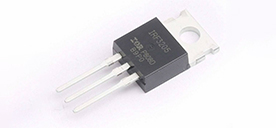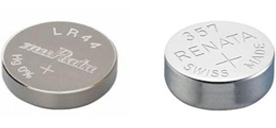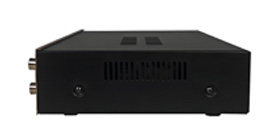Resonator step signal design and frequency selectivity research
2024/4/2 9:46:41
Views:
Resonator step signal design is a resonator designed using transmission lines for signal transmission and filtering at specific frequencies. By properly designing the width and length of the transmission line, the resonator can exhibit obvious resonance characteristics at the desired frequency.
Principle of Resonator
The resonance principle of the resonator is based on the relationship between the electrical length of the transmission line and the frequency. When the input signal frequency matches the resonant frequency, the impedance on the transmission line changes, causing a resonant effect. This frequency selectivity makes the resonator an important frequency selector and filter.
Resonator structure
Resonators usually consist of transmission lines, connectors and loads. The width and length of the transmission line determine the resonant frequency and bandwidth. Both sides of the transmission line are connected to the external circuit through connectors, and the other end is connected to the load. This simple structure makes the resonator easy to integrate into various RF and microwave systems.
How the resonator works
The working principle of the resonator is based on the step behavior of the transmission line. At the resonant frequency, the impedance mutation on the transmission line causes interference effects of reflection and transmission, enhancing signals at specific frequencies. This mechanism enables the resonator to achieve high transmission and attenuation characteristics within the bandpass range to meet the needs of different application scenarios.
Advantages of Resonators
Resonators have the following advantages over other traditional resonators:
1. Strong frequency selectivity: The resonator can achieve highly precise frequency selection, has a narrow bandwidth and sharp resonance peak, and is suitable for applications that require strict frequency control and signal filtering.
2. Compact structure design: The resonator has a simple design structure and is easy to manufacture and integrate into complex radio frequency systems. It has advantages in applications with limited space or high-density integration.
3. Stability and reliability: The resonator design is simple and relies on geometric shape and parameter control. It can maintain stable resonance characteristics when the frequency changes, and can still provide reliable performance under long-term operation and complex environments.
4. Efficient performance: The resonator not only has highly accurate frequency selectivity, but also provides good transmission efficiency and filtering effects to enhance system performance.
5. Strong adaptability: The resonator is flexible in design and suitable for different working environments and needs such as communication systems, radar technology, and radio equipment.
By rationally designing the shape and parameters of the transmission line, the resonator can achieve highly stable resonance characteristics and excellent frequency selectivity, becoming an indispensable component in the design of modern RF and microwave systems.
Principle of Resonator
The resonance principle of the resonator is based on the relationship between the electrical length of the transmission line and the frequency. When the input signal frequency matches the resonant frequency, the impedance on the transmission line changes, causing a resonant effect. This frequency selectivity makes the resonator an important frequency selector and filter.
Resonator structure
Resonators usually consist of transmission lines, connectors and loads. The width and length of the transmission line determine the resonant frequency and bandwidth. Both sides of the transmission line are connected to the external circuit through connectors, and the other end is connected to the load. This simple structure makes the resonator easy to integrate into various RF and microwave systems.
How the resonator works
The working principle of the resonator is based on the step behavior of the transmission line. At the resonant frequency, the impedance mutation on the transmission line causes interference effects of reflection and transmission, enhancing signals at specific frequencies. This mechanism enables the resonator to achieve high transmission and attenuation characteristics within the bandpass range to meet the needs of different application scenarios.
Advantages of Resonators
Resonators have the following advantages over other traditional resonators:
1. Strong frequency selectivity: The resonator can achieve highly precise frequency selection, has a narrow bandwidth and sharp resonance peak, and is suitable for applications that require strict frequency control and signal filtering.
2. Compact structure design: The resonator has a simple design structure and is easy to manufacture and integrate into complex radio frequency systems. It has advantages in applications with limited space or high-density integration.
3. Stability and reliability: The resonator design is simple and relies on geometric shape and parameter control. It can maintain stable resonance characteristics when the frequency changes, and can still provide reliable performance under long-term operation and complex environments.
4. Efficient performance: The resonator not only has highly accurate frequency selectivity, but also provides good transmission efficiency and filtering effects to enhance system performance.
5. Strong adaptability: The resonator is flexible in design and suitable for different working environments and needs such as communication systems, radar technology, and radio equipment.
By rationally designing the shape and parameters of the transmission line, the resonator can achieve highly stable resonance characteristics and excellent frequency selectivity, becoming an indispensable component in the design of modern RF and microwave systems.
Related Information
-
-
Phone
+86 135 3401 3447 -
Whatsapp





